Articles of 2006
Jimmy Lester: The Harder the Fight, the Better He Liked It
The word from San Francisco is that at age 62, Jimmy Lester is in the final round of the fight everybody loses by 10-count. Death triumphs over us all, but after this one The Grim Reaper will probably be pissing blood for a while and looking for a much softer touch than the 1960s middleweight contender called “The Bayview Blaster.”
Win or lose, it was that way with most of the guys who tangled with the hell-for-leather Lester. “In the pictures the papers printed (of his fights) nobody comes out of a Lester fight unmarked, nobody looks comfortable in the ring with the Bayview Blaster,” noted San Francisco Examiner reporter Edvins Beitiks in a piece published when Lester was honored 10 years ago by a group of ex-fighters from the Bay Area called “The Round House Boys.”
Jack Campbell of the Northern California Veteran Boxers’ Association put it this way: “I wouldn’t get into the ring with Jimmy unless I had a hand grenade. He was bad!”
Every Jimmy Lester fight was a war he fought as if the very right to continue breathing was at stake instead of a mere purse. That was a birthright from his father, Vern Lester, who fought in the 1940s under that name and also as Jimmy “Top Row” Allen. He got the nickname because he hit so hard spectators sitting in the top row could hear the punches when Allen fought at National Hall and Dreamland in the City by the Bay.
Look up the ringside reports from San Francisco in The Ring magazines from that era and you’ll find the phrase “hammer and tongs” used over and over to describe Top Row Allen’s fights. In 1947 he headed East, and in the April, 1948 issue of The Ring it was said that while “Lester doesn’t have an imposing record (he’s) a good body puncher and an exponent of aggressive ring tactics.”
Jake LaMotta found out for himself on October 18, 1948. Just eight months before he became middleweight champion of the world, LaMotta was lucky to win a split-decision over Lester at the Eastern Parkway Arena. LaMotta had almost 12 pounds on Top Row, but according to the report in The Ring, “several times in vicious exchanges, Lester forced his heavier rival to give ground.”
In the last fight of his 25-24-8 career, Vern Lester lost by fifth round TKO to then-welterweight champion Sugar Ray Robinson, in New Orleans. “Lester was in there leveling from the opening gong, and fans gave Ray and Lester a great ovation at the finish,” reported The Ring.
Jerry Lee Lewis probably didn’t make his kid play Tchaikovsky, and Top Row Allen sure as hell didn’t bring up Jimmy Lester, born on January 1, 1944, to be James J. Corbett.
“My old man said, ‘Son, every round is the first round.’ And I fought like that,” Lester told Edvins Beitiks. “Fighting came natural to me. It was just as natural as could be.”
He was a standout in football at Mission High School, and also played a mean guitar. But music and especially team sports never satisfied him the way boxing did. “Football was OK, but in the ring it was you and me and nobody else,” he said. He turned pro at 17, knocking out Marcel Scott in three rounds. That was in 1963, and of his first 11 fights, Lester won 10 inside the distance.
His first loss was by split-decision in 10 rounds to former junior middleweight champion Denny Moyer, whom Lester had beaten earlier in 1965. Top Row worked his son’s corner until he passed away between the Moyer fights. Lester was 17-1 when he met ranked contender Florentino Fernandez at Kezar Pavilion in San Francisco on October 20, 1965. Fernandez was a feared left-hooker who’d given Gene Fullmer 15 rounds of hell in a losing 1961 title fight, and had knocked out future light heavyweight champion Jose Torres. The San Francisco boxing press fretted that the local prospect was being rushed too fast, but after two rounds Fernandez left the ring with a broken jaw. “Lester didn’t miss Fernandez with many punches,” reported Eddie Muller. “He put him down in the first with a left hook. He dumped him the second time in the second round with a right.”
“Jimmy was sensational,” recalls Paul Cavagnaro, a 1940s heavyweight prospect from San Francisco. “What an exciting fight that was. Jimmy was nailing Fernandez with hooks and right crosses, punching with reckless abandon. There was nothing fancy about him. When the bell rang he’d walk right out and start throwing punches. You couldn’t get him off of you.”
After four more exciting wins, Lester was knocked out by veteran Stan Harrington in Hawaii, on July 5, 1966. He came back with two wins, and on November 28, 1966, Lester met Carmen Basilio clone Andy “The Dakota Kid” Heilman in a 10-round match in Oakland that shared the bill with a 10-rounder between middleweight contenders Bobo Olsen and Don Fullmer.
Ten minutes after it ended, nobody remembered the latter match; but today people who saw it still talk about Lester-Heilman. “It was probably one of the greatest fights we ever had in the Bay area,” recalls Promoter Don Chargin. “It was toe-to-toe for 10 rounds. They did not stop.” Poet Tom Smario later immortalized the fight, won by Heilman on a decision, in a wonderful poem titled “Fight of the Year” (“Heilman threw punches like a claustrophobic madman with a baseball bat. Lester fought like Lester was. A man swinging an axe in wide arcs and roundhouses that tear meat from the bone”).
Lester was ranked as high as number-two in the 160-pound division, but losses to Benny Briscoe, former welterweight champion Luis Rodriquez and then-147-pound champ Curtis Cokes set him back. But he beat the Hurricane Kid, Art Hernandez, Ralph McCoy, Rocky Hernandez and Charley “Bad News” Austin, and fight crowds were always mesmerized by the sight of Lester winging punches till the last bell.
“Everything was a war. If some trainer had contained him a little bit, what a fighter he would have been,” says Paul Cavagnaro. Bay Area former junior lightweight contender Ray Lunny III agrees. “What a toughie he was! Nothing clever, a rugged puncher who never stopped coming straight at you. What conditioning –– and talk about built! Unfortunately, Jimmy’s manager, Bill Sanford, had more guts than brains and matched Jimmy with all the good ones: Denny Moyer, Any Heilman, Luis Rodriquez, Benny Briscoe and Curtis Cokes.”
Lester’s attitude about fighting may have been summed up best by what happened before the final round of a rematch with Art Hernandez in the latter’s hometown of Omaha, Nebraska in 1970. As Lester stood waiting for the bell for the 10th, he turned to his manager and said: “Already the last round? Awww _____!” Hernandez got the decision after what Wally Provost of the Omaha World Herald called “the best 10-rounds of fighting Omaha has seen in years.”
After retiring from boxing with a record of 41-20-3, Lester became a security guard. While his dream of wearing a real law enforcement badge was never realized, Lester was always in the corner of the men in blue. Dan Hance is a retired San Francisco policeman who prizes a photo he has of himself and Jimmy Lester taken after Hance won a local Golden Gloves light heavyweight title in 1969. Hance also prizes the memory of what happened in the late 1970s when he and his partner on the force answered a call about gunfire in a run-down housing project. Two teenagers were banging away at one another. When Hance and his partner arrived on the scene, one of the shooters ran away. They apprehended the other, but as they tried to take him away a large, angry crowd materialized and out of it stepped a guy about Hance’s age who began taunting him and demanding that he let the young suspect go, calling Hance a “sissy” and challenging him to fight “a real man” like himself.
Just as things were getting ugly, Jimmy Lester appeared out of nowhere and confronted the ringleader. “I have known you your whole life,” he told him. “Dan could kick your ass.”
Not only did Hance get his suspect to the station without incident, but later that evening the agitator from the housing project showed up there to turn himself in for several outstanding warrants against him. With him, says Hance, was Lester, who’d “beat the crap out of the guy and then made him drive his own car” to jail.
Over the last decade, Lester’s health has steadily declined from a series of crippling strokes. He wasn’t in very good shape when I spoke to him by telephone several years ago, but managed to make himself perfectly clear on a couple of points. “I had a lot of hard fights. They were fun. I just loved hard fights,” he said. And he wished that he were 21 years old again so he could do it all over.
God bless this great warrior.
-
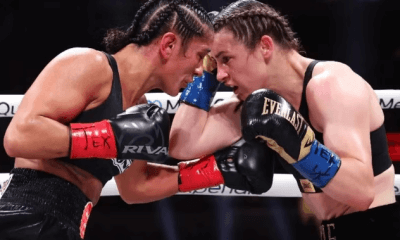
 Featured Articles3 weeks ago
Featured Articles3 weeks agoResults and Recaps from New York Where Taylor Edged Serrano Once Again
-

 Featured Articles1 week ago
Featured Articles1 week agoThe Hauser Report: Zayas-Garcia, Pacquiao, Usyk, and the NYSAC
-

 Featured Articles3 weeks ago
Featured Articles3 weeks agoResults and Recaps from NYC where Hamzah Sheeraz was Spectacular
-
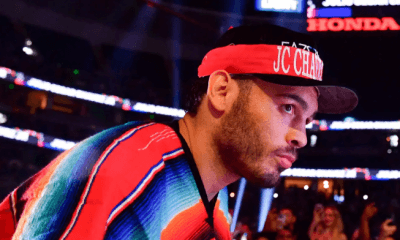
 Featured Articles4 weeks ago
Featured Articles4 weeks agoFrom a Sympathetic Figure to a Pariah: The Travails of Julio Cesar Chavez Jr
-
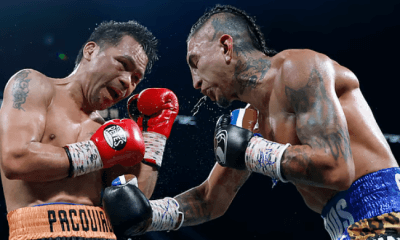
 Featured Articles2 weeks ago
Featured Articles2 weeks agoManny Pacquiao and Mario Barrios Fight to a Draw; Fundora stops Tim Tszyu
-
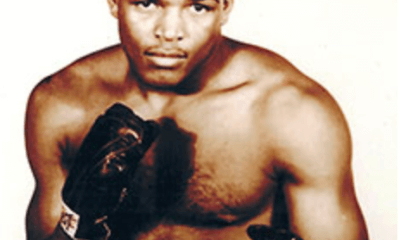
 Featured Articles3 weeks ago
Featured Articles3 weeks agoPhiladelphia Welterweight Gil Turner, a Phenom, Now Rests in an Unmarked Grave
-
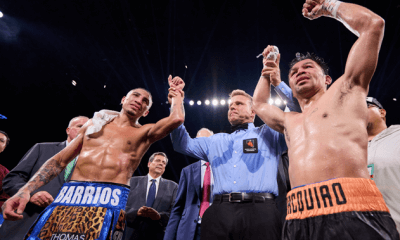
 Featured Articles2 weeks ago
Featured Articles2 weeks agoArne’s Almanac: Pacquiao-Barrios Redux
-
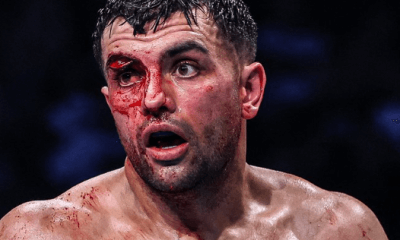
 Featured Articles4 weeks ago
Featured Articles4 weeks agoCatterall vs Eubank Ends Prematurely; Catterall Wins a Technical Decision

















